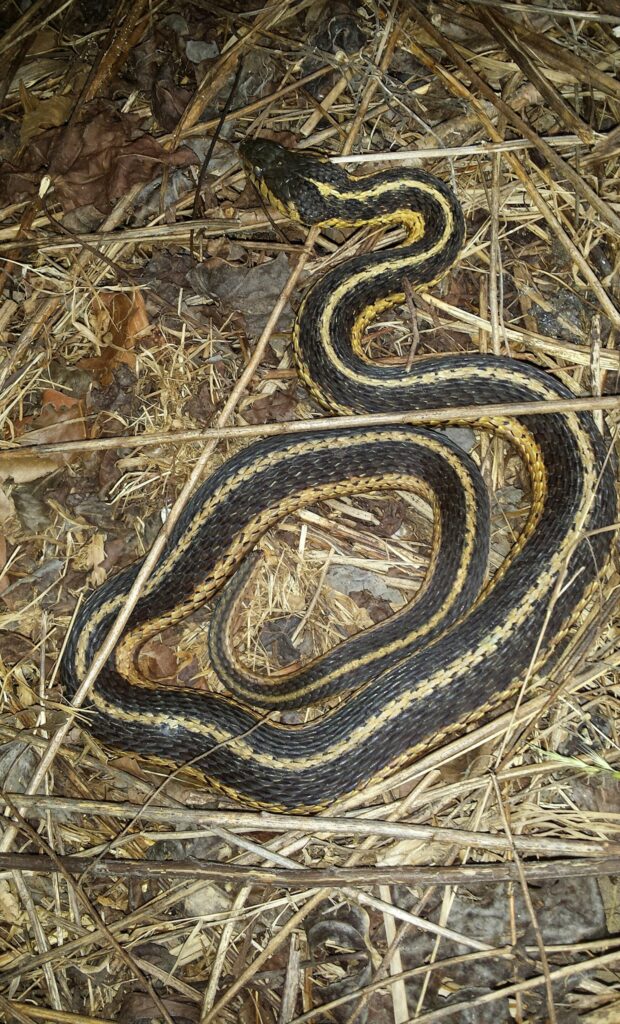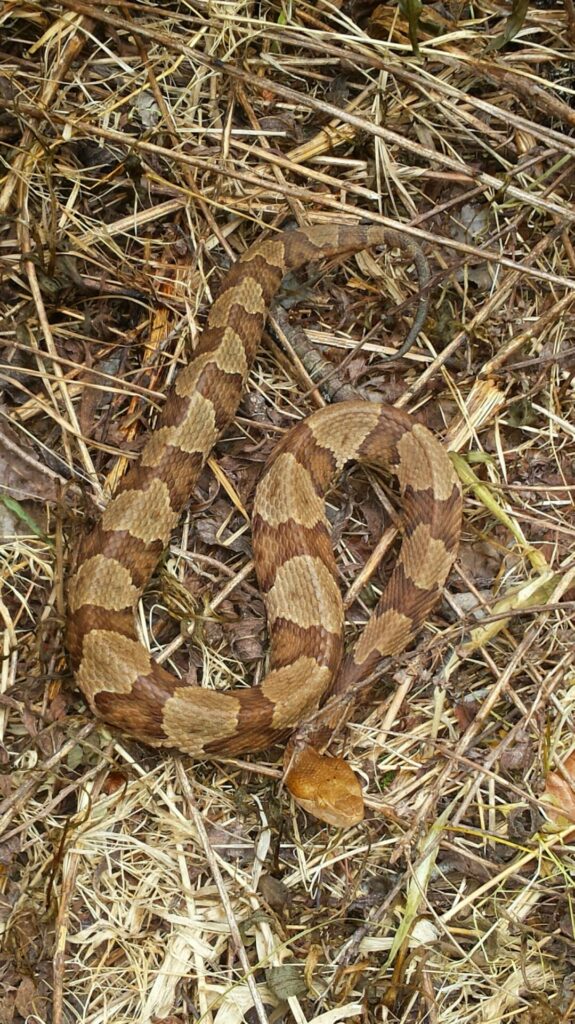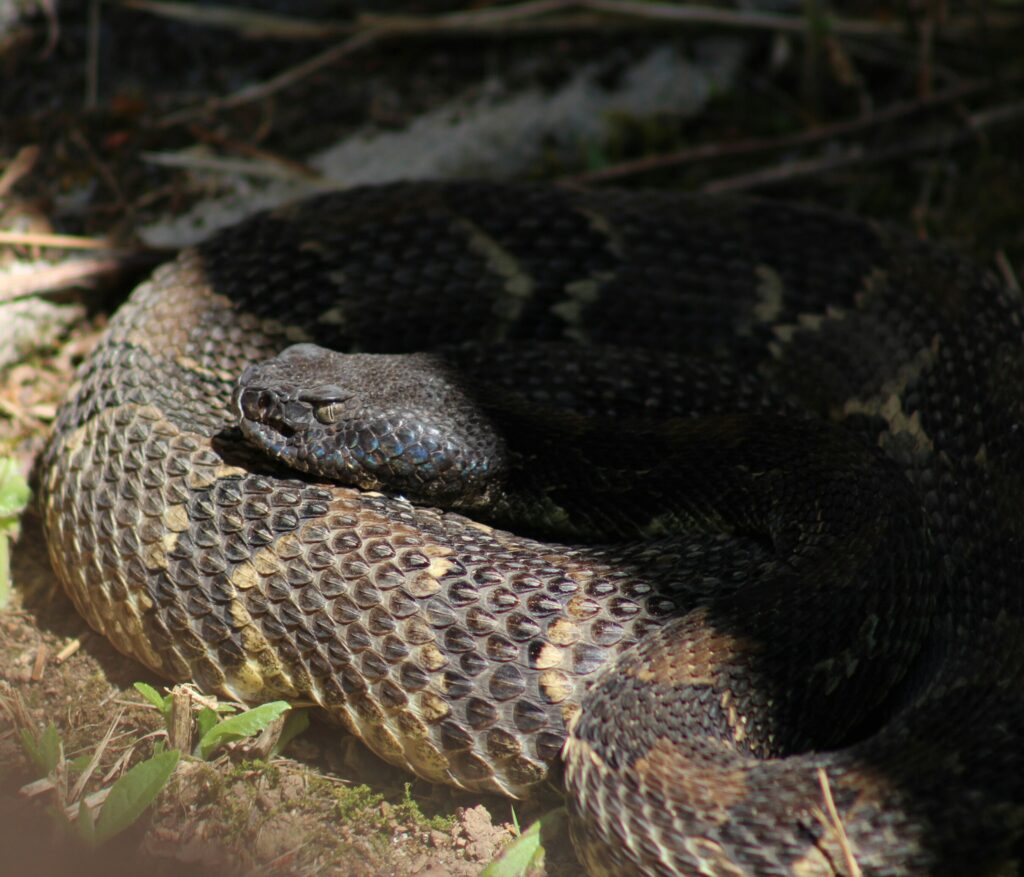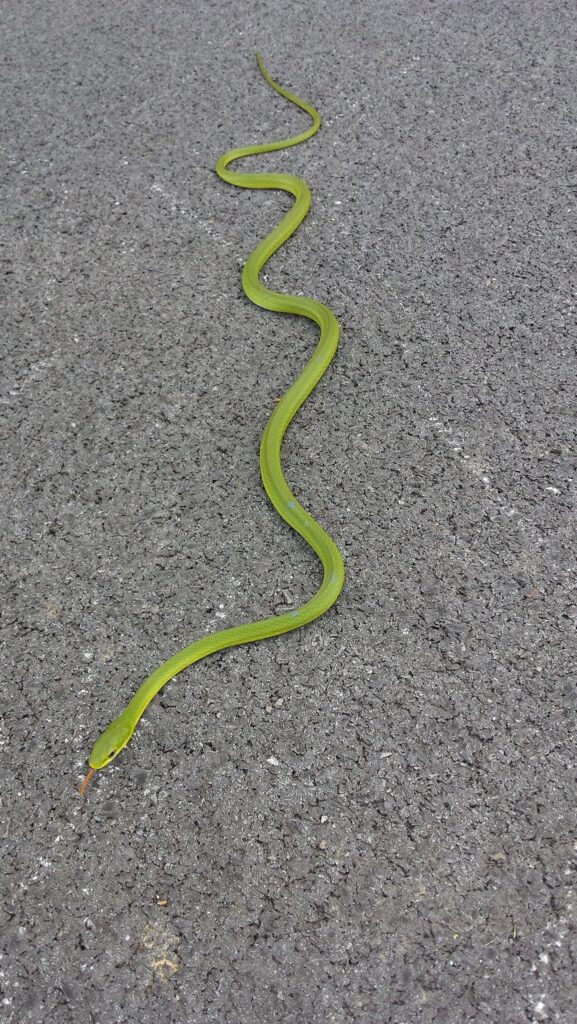Jun 12, 2023
What to Know About Snakes in the Smokies
We have put together info and images to help you understand what you need to know about snakes in the Smokies. But the biggest takeaway from this post is that there’s no need to let your fear of snakes keep you from enjoying your time in the Smokies.

Photo by Randy Ratliff
What Species of Snakes are in the Great Smoky Mountains
Most of the snakes you will encounter on your trip to the Peaceful Side of the Smokies are just that, peaceful and reclusive reptiles. There are 23 varieties of snakes in the Smokies, but only two of them are poisonous. To find a complete chart, including photos of every breed of snake you may encounter during your visit to the Smoky Mountains, click here to visit thesmokies.com/snakes/ website.

Photo by Randy Ratliff
Venomous vs. Non-venomous Snakes in the Smokies
The two venomous snakes to keep an eye out for are the Timber Rattlesnake and the Northern Copperhead. The Timber Rattler has the most toxic venom of the two species. Still, they will also give off warning signals before striking, that infamous loud rattle that lets you know you are too close. The Northern Copperhead, on the other hand, gives no warning. Although their bite is generally not venomous enough to kill, it will cause significant pain.
There are a few ways to identify venomous snakes in this region. As a general rule, all venomous snakes have triangular-shaped heads with verticle slit eyes. In contrast, non-venomous snakes tend to have rounder heads and pupils. Another easy giveaway is the snake’s habitat. Rattlesnakes tend to prefer rocky outcrops, ledges, and southern-facing hillsides while enjoying sunning on rocks. Copperheads, on the other hand, tend to hide in the crevices of rocks along stream banks. Also, be aware that both hide in manufactured structures like stone buildings and fences. The last thing to look for is the coloring of the snake. Copperheads, as their name suggests, have an identifying copper hue. At the same time, Timber Rattlers are usually brown but can vary from oranges to black depending on where they are during their molting season.

Photo by Randy Ratliff
Be Mindful While Exploring the Smoky Mountains
- Be aware of your environment. Be mindful where you step and pay attention to the warning rattle of an upset rattlesnake. If you are climbing on rocks, watch where you put your hands. Rocky outcrops are favored places for snakes to warm in the sun.
- Wear appropriate shoes. It may seem obvious, but sturdy hiking boots are more likely to protect your feet than a pair of flip-flops.
- Keep children close and explain what they need to look for before you start your exploration.
- Keep a hands-off approach with the snakes. Feeding, touching, teasing, and handling wildlife is prohibited in the national park. Continue to move along and do not interact.
- Do NOT kill a snake if you run across one on your path. It is illegal to kill snakes in the state of Tennessee.
What to Do If a Snake Bites You
First of all, there has never been a recorded fatality to do a venomous snake bite in the park. But if a snake bites you, the most important thing to do is stay calm and call 911 even if you believe the snake was not venomous. Make a note of the snake’s appearance, or even better, get a photo of the snake to show to healthcare professionals. Keep a black sharpie available in your emergency kit, so you can circle precisely where the bite is because, in time, the wound may swell and bruise. If possible, position yourself so that the bite stays at or above heart level. The CDC no longer recommends trying to remove the venom yourself but instead spend that time seeking immediate medical attention.

Photo by Randy Ratliff
Snakes are part of the Smokies, but nothing to fear. Make yourself knowledgeable, pay attention to where you step, and be respectful to these mostly peaceful inhabitants. Stay aware of your environment and have a great time enjoying this gorgeous part of the country.
